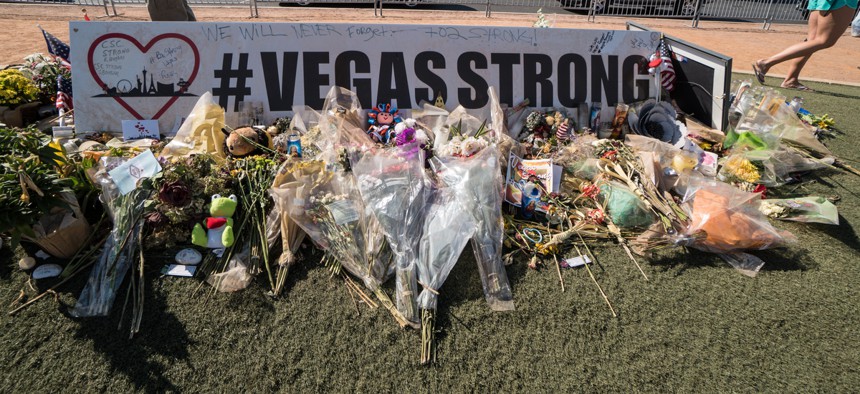Triage and Response Lessons From the Las Vegas Shooting

Shutterstock
Emergency Management Administrator Carolyn Levering shares key takeaways from how local agencies dealt with the mass-casualty event.
LAS VEGAS — Victims fleeing the Route 91 Harvest music festival shooting in October unintentionally thwarted emergency first responders’ efforts to conduct triage on site by transporting themselves to hospitals in larger-than-anticipated numbers.
Ambulances were lined up waiting to dispatch, but the immediate chaos at the scene and lack of a location on the shooter delayed the city’s response, Emergency Management Administrator Carolyn Levering told Route Fifty in a recent interview.
Adding to the confusion, the Las Vegas Metropolitan Police Department fielded calls from numerous buildings in the festival area reporting gunfire and wounded. Those buildings then had to be visited to rule out the possibility of a roving shooter or several.
“Once we were able to determine the one and only shooter was shot, we were able to secure the scene in such a way as to provide more of that triage and transport in a more orderly fashion,” Levering said. “But by then many people had already left on their own, going in their own direction seeking resources and treatment.”
Hospitals didn’t have the resources to handle self-transports, but since the shooting the assumption is triage support will be needed there, in the event of another such tragedy, to sort through the most critical cases.
Changes to the regional mass casualty incident response plan take time because they must be agreed upon by 17 area hospitals represented by multiple national corporations—some for-profit, some nonprofit—on top of ambulance companies and emergency medical services.
The majority of the Las Vegas Strip, including the Mandalay Bay Resort where the shooting occurred, is unincorporated and under the jurisdiction of Clark County, but all local fire departments have an automatic mutual aid agreement.
Immediately dispatching triage responders to hospitals in the future was something everyone could get on board with.
“That’s something that we were able to do very quickly,” Levering said. “Most of our responders already understand the basics of triage.”
Making the appropriate training exercise reforms will take longer.
The city-county police department’s coordination with privately owned casinos and resorts on the Strip was a bright spot during the shooting, Levering said, because they regularly train with security teams to make sure they’re familiar with layouts—same as with large hotels inside Las Vegas city limits.
Multi-Assault, Counter Terrorism Action Capabilities, or MACTAC, trainings involve multiple agencies and security staff practicing active shooter drills. In some instances, two “shooters” split up and are searched for while force protection teams guard bulletproof vest-wearing medical responders attending to staged casualties.
That’s how law enforcement was able to find and close in on the Mandalay Bay shooter, 64-year-old Stephen Paddock, relatively quickly.
“It didn’t matter that they hadn’t worked with each other every day,” Levering said. “We weren’t waiting for a special SWAT team. Let’s just put it that way.”
That doesn’t mean there weren’t complications. Paddock killed 58 people and injured more than 800 others, in part, because he was shooting down into an outdoor venue outside the Mandalay Bay property’s footprint, which police hadn’t counted on.
Las Vegas is also looking at requiring event organizers like Live Nation Entertainment, which puts on Route 91 Harvest, to increase security staffing based on the number of attendees—either through legislation or additional permitting stipulations.
The permitting process already requires a minimal level of staffing of medical and security personnel to handle the occasional fall, fight or drug overdose, but not mass shootings. Organizers are also expected to pay the overtime of police and fire medics “because our taxpayers aren’t going to shoulder the burden of hosting these special events,” Levering said.
More costs could be passed onto organizers moving forward.
The city has also turned its Family Assistance Center into a model Vegas Strong Resiliency Center, next to a Clark County Social Services building, to provide survivors and family members with a list of accessible hospitals, lodging and transportation should another shooting happen. Many victims of the October shooting were from out of town, and half were from California.
“We hope we never have to use it for instances like this one,” Levering said. “But if another major event occurs, it’s already up and running.”
Dave Nyczepir is a News Editor at Government Executive’s Route Fifty and is based in Washington, D.C.
NEXT STORY: Artificial Intelligence for Policing Stirs Ethics Concerns






